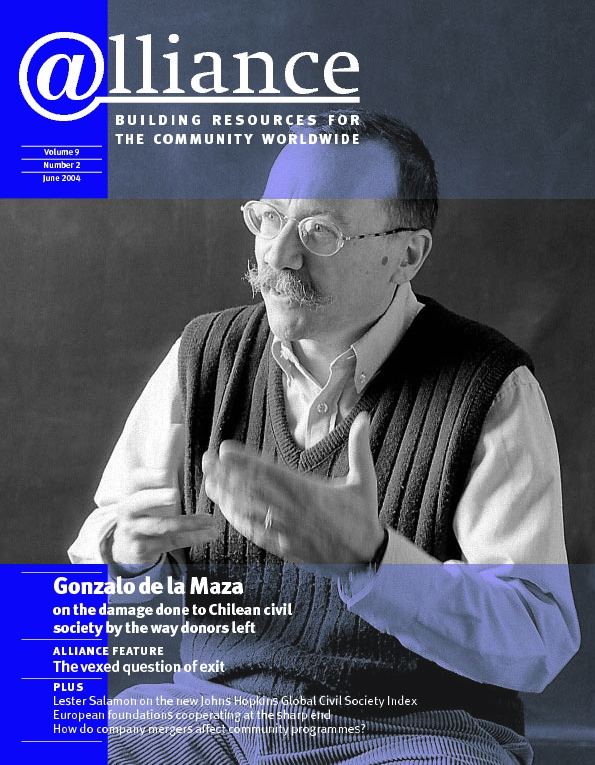As Lester Salamon explains (see above), the Johns Hopkins Global Civil Society Index gives scores to 34 countries for the capacity, sustainability and impact of their civil society sectors. Any index that effectively ranks countries is bound to be controversial. Why did he and his colleagues decide to produce an index, and what purpose will it serve, Alliance asked Salamon.
‘We had so much data,’ he says, that it was becoming difficult for people ‘to get their arms around it’ – an expression that came up several times in the interview. The index is a way to pull the data together coherently, organize it, and make it understandable.
An objective index
‘Perhaps the most important feature of this index is that it is based on objective data,’ he stresses. ‘This means that it meets the basic social science standard of reliability, which requires that different observers looking at the same reality will come up with basically similar results.’ But doesn’t this depend on accepting the definitions and indicators used? ‘Yes, to some extent,’ agrees Salamon, ‘but these choices aren’t arbitrary ones. There is a substantial body of social science advice about how to construct a reliable index. The advice is to focus on the central core of the concept being examined and to use indicators that are validly related to it, that reflect the diversity of relevant experience, and for which objective measures can be found.
‘So we focused on what is commonly considered to be the core of the civil society concept – namely associations of people, whether formal or informal, operating outside the market and the state. And we used a definition of this associational core that we have tested and found workable in more than 40 countries, North and South.’
The index focuses on several different dimensions of civil society and uses a variety of indicators for each one. ‘This produces a much fairer and more balanced picture of the state of civil society in different countries than any single measure can.’ The team took particular care to capture not just the formal, service-oriented parts of the sector, but also the informal, expressive parts involving volunteers, advocacy, and members. ‘This is why a country like Norway, with a relatively small number of civil society organizations with paid staff, could still score second highest of all the countries we examined.’
What is the purpose of the index?
‘The index is intended, in the first place, to help focus attention on the civil society sector just as the Millennium Development Goals and the Human Development Index have helped focus attention on the need for development and poverty alleviation,’ notes Salamon. It will also help civil society activists make the case for changes in law and policy in their countries by enabling them to compare their circumstances with those elsewhere. Finally, it is intended to provide a way to chart the effects of such changes. ‘If you can’t measure your progress, how do you know how well you’re doing?’
Very similar claims are made for the CIVICUS Civil Society Index. How will the new index differ from this? ‘The CIVICUS Diamond,’ says Salamon, ‘is a good-faith effort to create a diagnostic tool that local civil society leaders can use to structure an assessment of civil society in their own countries. But it relies heavily on the subjective judgements of local informants and can’t really be used for comparisons among countries, or even within countries over time.’
Will there be criticisms?
‘If you rank anything, there will be people who feel they were ranked too high or too low,’ Salamon admits. ‘Some people will quarrel with the basic definition or challenge particular indicators. So long as this remains on the level of substantive debate and doesn’t degenerate into a squabble over the supposed motives behind the choice of this or that indicator, this can be healthy for the field.’ But, Salamon emphasizes, there will always be room for improvement. In fact, he hopes the index will advance the debate about the basic meaning of civil society and stimulate improvements in the indicators and data available to depict it.
Is there a danger that low-scoring countries will become demoralized and high-scoring ones complacent? Salamon sees complacency as the greater risk, but given that no country scored the maximum of 100 per cent, and that all fell down on some indicators, he hopes countries at the top won’t be tempted to think they’ve got as far as it’s possible to go.
He’s less worried about demoralization. He hopes the index will spur countries that are ranked lower than they would like to take action to strengthen their sector. ‘To the extent this occurs, civil society will be strengthened and the world will be better off.’






Comments (0)